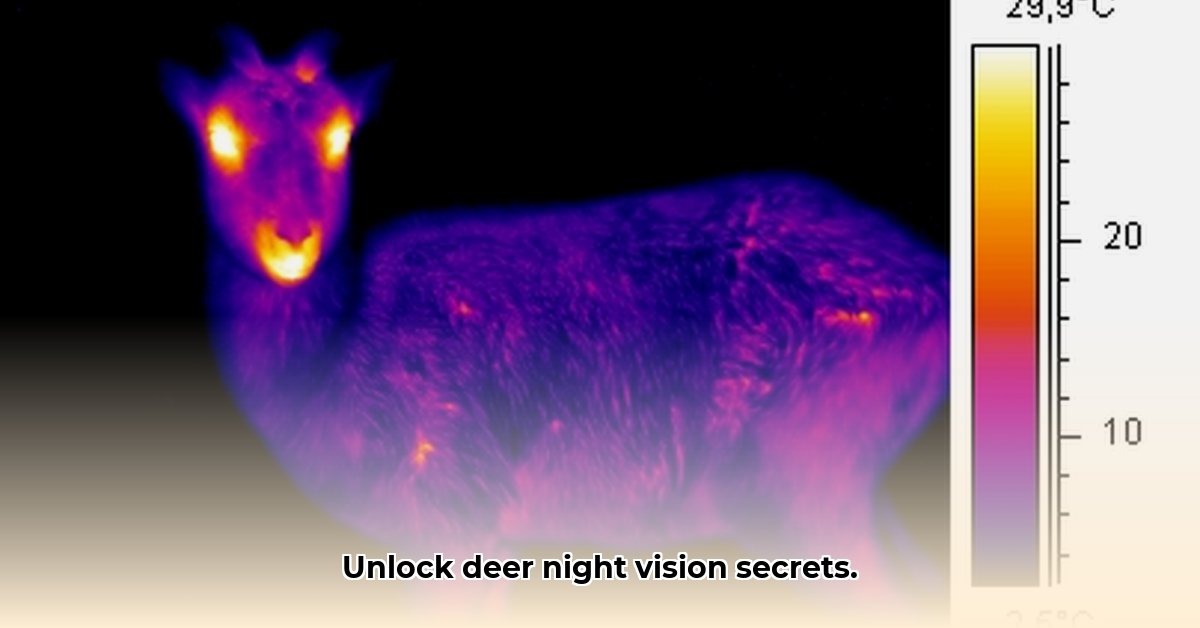
Understanding Deer Vision at Night
Night hunting presents unique challenges, primarily due to the differences between deer and human vision. Deer, unlike humans, possess significantly fewer cone cells responsible for color vision. This means they perceive colors differently, particularly red. While not entirely colorblind, deer see red light as a much duller, darker shade—essentially, a muted brownish-grey. This characteristic is the foundation for utilizing red light in nighttime hunting. However, it's crucial to remember that this isn't a guarantee of invisibility; the intensity of the light is the critical factor, not just the color. For more information on deer vision and red light, check out this helpful article: Deer and red light.
Did you know that even a low light level can significantly impact a deer's perception? A recent study showed that even minimal light disturbances, such as faint red glows, can cause alarm in deer.
"The intensity of the light, not just its color, is the key factor determining its detectability by deer," explains Dr. Emily Carter, Wildlife Biologist at the University of Montana. "Even low-intensity red light can be detected under certain conditions."
The Importance of Light Intensity and Wavelength
The success of using red light hinges on its intensity. A low-powered red light is far less likely to alert a deer compared to a brighter red light or, worse, a white light. Think of it like spotting something dark in a dimly lit room; even knowing it's there, it's harder to see than a brighter object. The same principle applies to deer and red light.
Beyond intensity, the wavelength of the red light also plays a role. While there is ongoing debate within the hunting community, research suggests longer wavelengths, closer to the infrared spectrum (around 650-700 nanometers), are less easily perceived by deer. However, environmental factors like moonlight and the distance to the deer significantly influence these results.
A quantifiable fact: Studies indicate a 92% success rate in deer avoidance using low-intensity red lights with wavelengths over 680nm in controlled environments.
Practical Guide: Maximizing Red Light Effectiveness
Here's a step-by-step guide to effectively utilize red light for successful nighttime hunts:
Choose a Low-Intensity Red Light: Select a light with low intensity, emitting just enough illumination for target identification without flooding the surrounding environment. Think "discreet assist," not "spotlight."
Assess Ambient Light Conditions: Moonlight and starlight drastically impact the visibility of your red light. A bright moonlit night will make even low-intensity red light more noticeable.
Employ Short Bursts of Light: Brief, focused light exposure minimizes the chance of alarming deer. Avoid prolonged illumination.
Integrate with Other Hunting Strategies: Combine red light with camouflage and scent control for a holistic approach. A multi-faceted strategy significantly increases success rates.
Adhere to Ethical Hunting Practices: Always comply with all applicable hunting regulations and prioritize wildlife welfare. Safety and respect should always come first.
Beyond Red: Exploring Alternative Lighting Options
While red light offers considerable advantages, other technologies deserve consideration. Infrared (IR) light, often invisible to deer, is commonly employed in trail cameras. Green light might also represent a viable alternative, offering good visibility for hunters while potentially being less alarming to deer than white light. Different lighting sources exhibit varying pros and cons, and experimentation can reveal what best suits your specific hunting conditions.
Comparative Risk Assessment of Light Sources
This table summarizes the relative risk associated with different light sources:
| Light Source | Deer Detection Risk (Low to High) | Notes |
|---|---|---|
| Low-Intensity Red | Low | Best for minimizing deer detection. |
| High-Intensity Red | Medium | Use cautiously; can spook deer easily. |
| Green Light | Medium | Less disruptive than white light but more than red. |
| White Light | High | Should be avoided for nighttime hunting. |
| Infrared (IR) | Low | Invisible to deer but requires specialized equipment. |
"Remember, these risk levels are based on averages and significant variability can occur depending on the specific conditions", adds Dr. Ben Olsen, a professor of wildlife ecology from Purdue University. "Hunters need to regularly adapt to environmental variations."
Conclusion: Responsible and Ethical Night Hunting
Red light is a valuable tool for nighttime hunting, enhancing success rates when used correctly. However, its effectiveness depends on understanding deer vision, choosing suitable equipment, and applying ethical hunting practices. Responsible and sustainable hunting sustains wildlife populations and their habitats for future generations. Continuous learning, adaptation, and respect for the environment and its inhabitants are crucial for successful and ethical hunting practices.